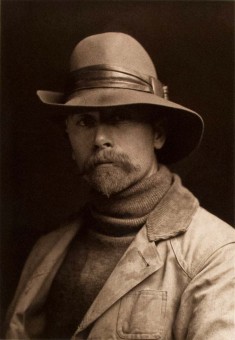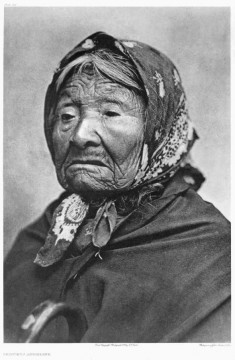| Edward S. Curtis | |
|---|---|
 |
|
| Photographer | |
| Born | Feb. 16, 1868 Whitewater, Wisconsin, U.S. |
| Died | Oct. 19, 1952 (at age 84) Los Angeles, California, U.S. |
| Nationality | American |
Edward S. Curtis was one of America’s most popular photographers of western culture and Native American life. He is known for such works as The North American Indian, The Land of the Head Hunters, and several other works.
Early Years
Edward Curtis was born in 1868 in Wisconsin to Johnson and Ellen Curtis. His father was a war veteran and a preacher. In 1874, his family relocated to Cordova, a rural settlement in Minnesota, where his father worked as a preacher for the United Brethren Church, which would often send its pastors out into the countryside to minister. Johnson took Edward on these voyages and taught him river navigation, canoeing, and basic camping skills. The father and son shared the love of an outdoor life together.
At the age of 12, Edward made his first camera with the assistance of Wilson’s Photographics. At 17, Edward worked as a photographer in St. Paul for some time. Since his father’s health was deteriorating and his older brother had just married and relocated to Portland, Curtis took responsibility of supporting his family.
He worked as a supervisor in Minneapolis, St. Paul, and at the Sault St. Marie Railroad. In 1887, Edward and his father moved to Washington. They were later joined by his mother and two of his siblings.
Career in Photography
Soon after arriving in Washington, his father died from pneumonia. Edward then assumed a full responsibility for supporting his family. While his income was not enough, he managed to purchase a camera. In 1892, he formed a partnership with Thomas Guptill to open a studio in Seattle. Although their business boomed, they parted ways five years later and Curtis renamed the studio after himself – Edward S. Curtis, Photographer and Photoengraver.
Edward started to photograph Native Americans in the 1890s digging for the clams and mussels on tide flats. Amongst his first models was Princess Angeline, the daughter of Seattle’s Chief Sealth. Having become renowned for his great work with the Indians, he took part in the 1899 Harriman voyage to Alaska as one of the two official photographers.
He then accompanied George Bird Grinnell, an editor of Forest and Stream, on a tour to Montana. There they wanted to photograph the Blackfeet Indians tribe. Travelling on horseback, they emerged from beautiful mountains to view the valley floor crammed with more than one thousand teepees – a spectacular sight that transformed Edward’s life. It was at that time that he decided to record the life of North American Indians.
Greatest Photographic Achievements
Edward Curtis spent the next three decades photographing and documenting more than 80 tribes. His work won the support from prominent figures. He also produced a movie based on the myths of the Rawakiutl Indians.
After its completion, the work entitled The North American Indian, was comprised of 20 volumes, each with 75 hand-pressed photogravures and 300 pages of scripts. Each volume had a corresponding portfolio with 36 photogravures.
Edward Curtis died of a heart attack in 1952 in Whittier, CA, in his daughter’s home.